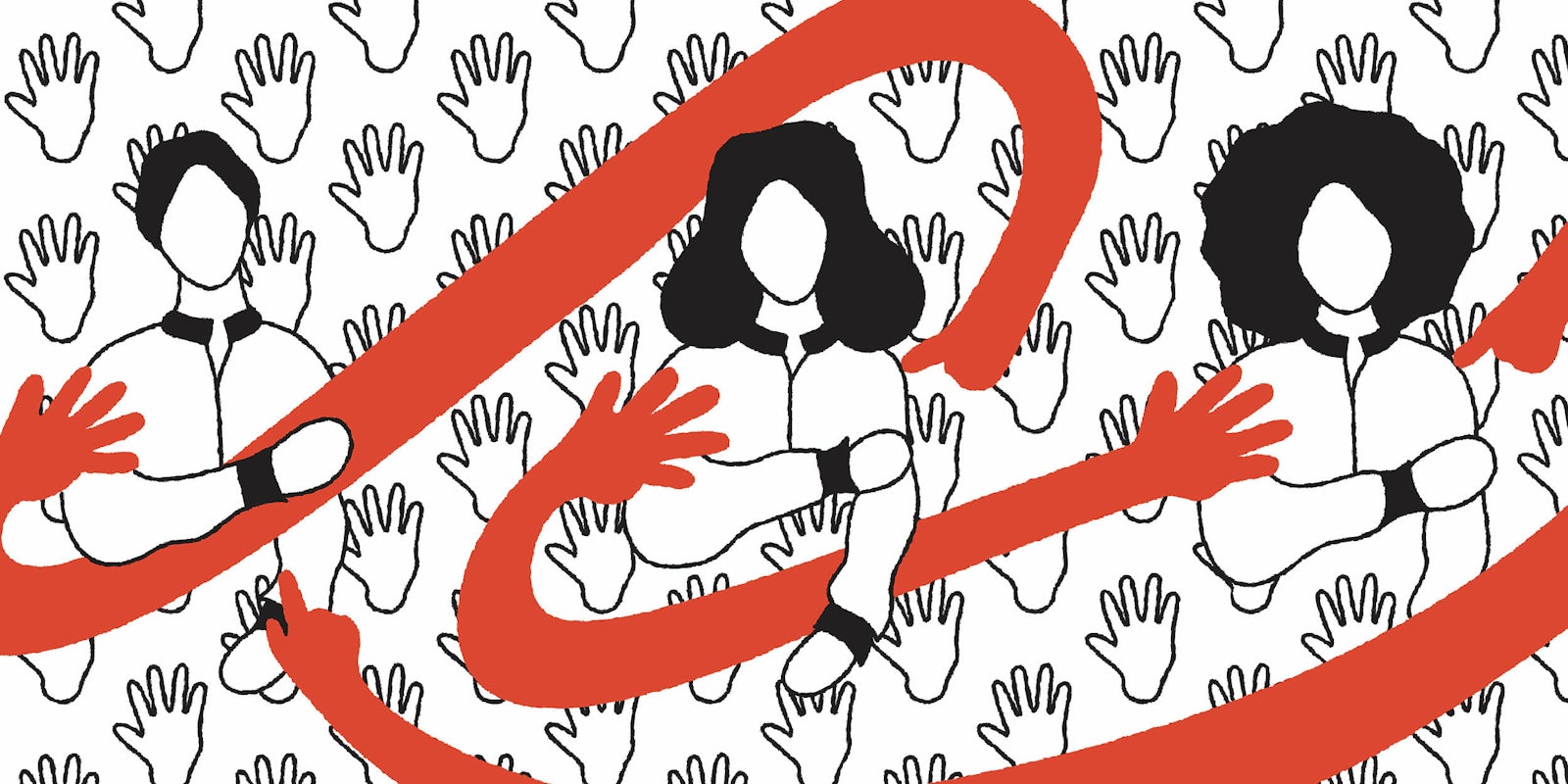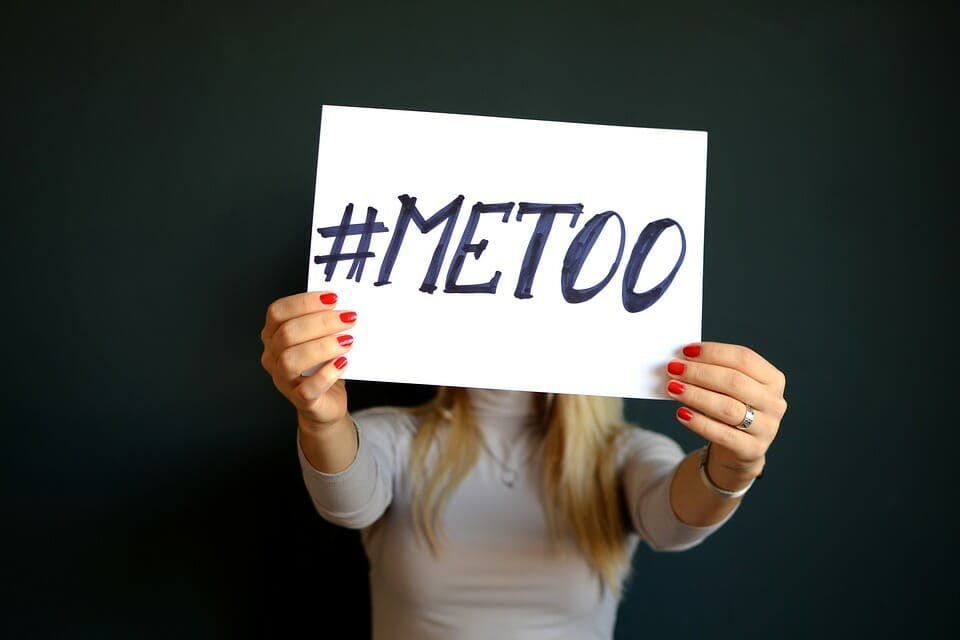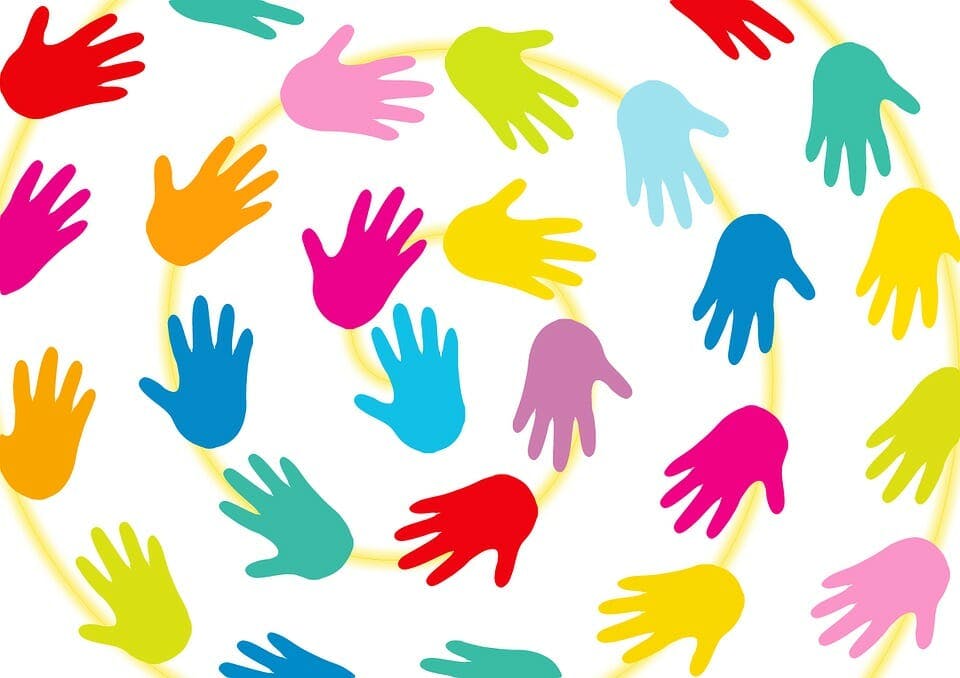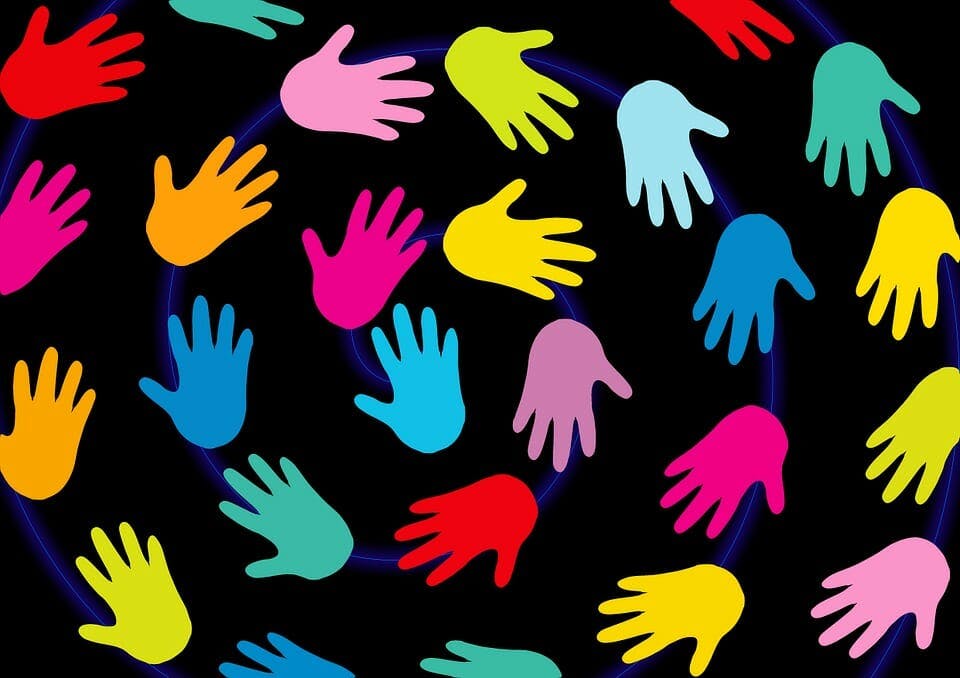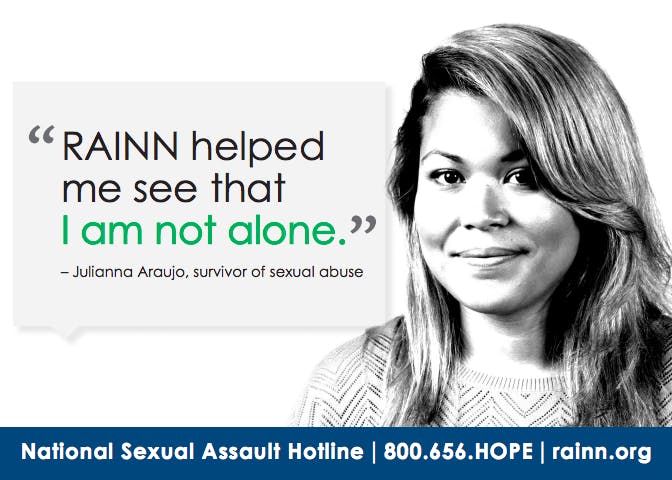In the summer before my sophomore year of college, I worked as an orientation advisor. In training for the position, we all had to attend a weekend-long seminar that touched on the more nuanced topics we’d speak to freshmen about, such as diversity, risk management—and, particularly, sexual assault.
At the seminar, one of the orientation staffers recounted her sexual assault story. As she paced the room, I found myself staring up at the ceiling, thinking about my own story, comparing the people in hers to the people in mine. I was frozen and I was aware I was frozen, trying to steady my breath and blink back tears.
After breaking the session, the staffer approached me and asked if I was OK. I assured her I was fine, then walked behind the building to cry.
That was not what had happened to me, I told myself. I am not someone who something like that could happen to. I wanted to believe that what happened to me was not that bad.
This phenomenon, of underestimating experiences of sexual harassment and assault, only to have the trauma of it dredged up when hearing similar stories, is not uncommon. The weeks-turning-months of sexual harassment and assault coverage that stemmed from women coming forward to say producer Harvey Weinstein harassed and raped them have led to women across all industries saying, “Me too.”
“The issue of ‘under-defining’ one’s experience as a survivor of sexual violence is pervasive. People do not see the damage that perpetual harassment and sexual abuse causes to someone’s psyche,” Liz Boyce, training program director and staff attorney at the Texas Association Against Sexual Assault (TAASA), told the Daily Dot. “It’s easy for those not personally affected by sexual harassment to minimize ‘just’ words or jokes, or inappropriate touches when comparing those actions and words to more physically invasive assaults with resulting physical injuries. But the damage is real, even though it may not be visible. It is important to recognize the very real negative impact that occurs from harassing words and actions that fall short of…rape.”
In the years following my advisor training, I’ve been able to process my experience further and unlearn the denial and blame anchored deep in me. But that may not have happened so quickly—or even, at all—had I not had to listen to trained professionals break down what constitutes sexual harassment and assault, multiple times.
For the record, this type of “un-learning,” much like any kind of talking, writing, reading, listening or thinking about past assaults, was uncomfortable to say the least. But in a country where only 21 states and the District of Columbia require sex education to cover skills for “avoiding coerced sex,” and where one of its citizens is sexually assaulted every 98 seconds, information on sexual harassment and assault should be readily available to anyone who may not understand what they’ve experienced.
What is sexual harassment?
In the United States, sexual harassment refers to “unwelcome sexual advances, requests for sexual favors, and other verbal or physical harassment of a sexual nature,” either in the workplace, at school, or other learning environments. This is according to the Equal Employment Opportunity Commission (EEOC), the U.S. governmental agency that manages workplace discrimination. Sexual harassment can come from a supervisor, a co-worker, or someone who is not an employee, such as a client or customer.
Under Title VII of the Civil Rights Act of 1964, which is enforced by the EEOC, it is unlawful to harass a job applicant or employee because of that person’s gender. In 1986, the Supreme Court ruled that sexual harassment was included under Title VII, and ruled the same for same-sex sexual harassment in 1998.
The Office for Civil Rights under the U.S. Department of Education also uses the same definition of sexual harassment, though it considers sexual harassment to fall under the umbrella of “sex-based harassment,” along with gender-based harassment. (Gender-based harassment is defined as “unwelcome conduct based on a student’s actual or perceived sex, including harassing conduct based on a student’s gender expression, gender identity, transgender status, gender transition, or nonconformity with sex stereotypes.”) Under Title IX, a federal law that prohibits sex-based discrimination in education programs that receive federal funding, schools are required to prevent and remedy all forms of sex-based harassment.
Noreen Farrell, executive director of women’s nonprofit Equal Rights Advocates, told the Daily Dot that the sexual harassment isn’t limited to actions of “sexual” nature—it also includes degrading and derogatory comments and conduct about someone’s gender that creates a hostile work or educational environment. For example, negative comments about women in general—them being the “weaker” sex, them being “bitches”—could still be considered sexual harassment.
According to a 2016 study from the Equal Employment Opportunity Commission (EEOC), an estimated 75 percent of all workplace harassment is never reported. Farrell told the Daily Dot she found it unsurprising that so many women forgo reporting workplace harassment and end up having to minimize bad and unlawful behavior.
“It is extremely common for women to tolerate sexual harassment as the price of a paycheck…For decades, women have been shown that there are no real consequences for sexually harassing behavior. When there are no consequences, women become disinclined to challenge harassment and assault, even if the conduct is prohibited by state and federal civil rights laws,” Farrell said. “There is also a very real fear of risking their job by complaining, particularly for low-wage women workers.”
What is sexual assault?
According to the Rape, Abuse, and Incest National Network (RAINN), the largest anti-sexual violence organization in the United States, the term “sexual assault” refers to sexual contact or behavior that occurs without explicit consent. Sexual assault includes, but isn’t limited to: attempted rape, fondling or unwanted sexual touching, forcing someone to perform sexual acts, such as oral sex or penetrating the perpetrator’s body, or penetrating someone—also known as rape.
“Force,” the network notes, doesn’t just refer to physically forcing something upon someone. RAINN states other types of force include emotional coercion, psychological force, or manipulation, use of threats as a way to force a victim to comply with nonconsensual sex.
The U.S. Department of Justice Office on Violence Against Women shares a similar definition of sexual assault with RAINN. However, while the federal definition of sexual harassment holds the same state-to-state, each state legally defines and criminalizes types of sexual assault differently. For example, according to RAINN’s state law database, California has specified penalties for rape of a spouse, sodomy, sexual battery, aggravated sexual assault of a child, sexual acts with a child 10 years or younger, and statutory rape, among others. Texas, meanwhile, only has defined penalties for sexual assault, aggravated sexual assault, and sodomy. These state laws also have different statutes of limitations, the maximum amount of time that can pass before legal proceedings can no longer be pursued.
While, until this day, many people still envision rape as a crime done by a stranger in a dark alleyway, 70 percent of sexual assaults are committed by someone the survivor knows.
In the 1970s, the National Organization for Women (NOW) pushed for legislative reform to criminalize sexual violence and set up rape crisis hotlines across the country. This effort stemmed from work done during the 1960s by the second-wave-feminist anti-rape movement, which sought to redefine sexual violence and rape as crimes of power, not “crimes of passion” only committed by “mentally ill” men as once believed.
Thanks to NOW and other feminist organizations, by 1980, rape laws across most states had been changed to include: removing exemptions for marital rape; implementing rape shield laws that prevent a survivor’s sexual history to discredit her; redefining consent to recognize both submission or lack of consent; excluding rape witness requirements; and increasing the age of statutory rape from 10 to 12. Marital rape was criminalized across all 50 states by 1993.
READ MORE:
- A plain and simple guide to understanding consent
- The best self-care tips and ideas
- Everything you have never understood about being nonbinary
- 15 facts you should probably know about revenge porn
What about the “kinda, sorta” stuff that makes women uncomfortable?
The EEOC states that ”simple teasing, offhand comments, or isolated incidents that are not very serious” aren’t prohibited under federal laws. But as we touched on earlier, making offensive remarks about gender—aka commenting on women in general—is considered harassment.
Women may initially brush off sexist cut-downs or comments about their appearance out of discomfort, fear of retaliation, or simply because they have heard such things their entire lives. According to Boyce, the program director from TAASA, the bottom line is whether this behavior allows one person’s will to overpower the will of another person’s. The behavior becomes harassment when there is clear communication that a particular conduct is unwelcome, and the conduct does not stop.
However, many women, especially when they are on the receiving end of the power dynamic, have a difficult time conveying that message.
“It can be really hard to communicate clearly that you are uncomfortable with jokes or touches that feel inappropriate but don’t rise to the level of ‘serious misconduct.’ Frequently, people will downplay the importance of their feelings of discomfort in these situations, because they are trapped due to economic, educational or relational factors,” Boyce said. “They cannot risk speaking out, for fear of risking their job, school or home life. Sexual predators know this vulnerability exists, and they use it to their advantage.”
In situations such as these, Maya Raghu, director of workplace justice at the National Women’s Law Center, told the Daily Dot that it’s important for people who feel they may be experiencing harassment to document it.
“It’s important, regardless of what decision an individual might make about whether to come forward or not, to document what happened—things people say, things people do, in the workplace that may be harassment,” Raghu said. “A hostile work environment, sexual harassment claim, is sort of this culmination of different comments, behaviors, and actions that, by themselves, may not constitute sexual harassment, but together can be a hostile work environment.”
What is rape culture?
“Rape culture,” at its core, refers to the various ways society tolerates, permits, or defends sexual violence, which includes sexual assault and sexual harassment. Second-wave feminists coined the term in the 1975 film Rape Culture, which explored the relationship between sexual violence, popular culture, and normalized behavior, as a way to educate the public about the prevalence of rape.
According to Everyday Feminism, rape culture can be seen in situations where sexual assault, rape, and general violence are ignored, trivialized, normalized, or made into jokes. A textbook example of rape culture at work is victim blaming—a way of framing sexual violence that puts the onus of responsibility in preventing the attack on the survivor and erases the assailant of culpability. For example, friends, family members, and first responders may ask sexual assault survivors questions such as: “What were you wearing?” “Why were you there?” and “What did you do to lead on the perpetrator?”
We often perpetuate rape culture with the way we address sexual assault and harassment allegations made against people in power. You could argue that it was until this past Weinstein news cycle that we stopped completely excusing politicians, industry titans, celebrities, and athletes for committing assault or harassment because their power gives them credibility over their accusers, who have to show up in the dozens and hundreds to be believed.
How does rape culture play into the legal system?
Why is it so hard for survivors, perpetrators, and society at large to recognize the seriousness of harassment or assault? Rape culture also manifests itself in our laws, which show what our society values and wants to protect against. During the Civil War, rape laws often criminalized attacks on white women by Black men but did not seek justice for Black women attacked by white men. These previous laws reflect the U.S.’s valuation of women as physical property of men and of whiteness’ as a symbol of power, as well as the U.S.’s lack of concern with a woman’s bodily autonomy.
In the context of all U.S. history, the anti-rape movement’s push for reforming the criminalization of sexual assault only happened fairly recently. Rape laws originally considered the rape of a virgin daughter or wife to be a crime of “property” theft of her father or husband, respectively. The rapist would then have to compensate the man for the violation.
We can still see this lack of regard for sexual assault in present state laws. Boyce pointed out that in Texas, for example, if someone touches another person on the breasts or genitals without their consent, they can only be cited a ticket, which similar to a traffic offense.
“That person’s conduct is only tantamount to a Class C misdemeanor in the State of Texas, which is clearly not adequate protection against this type of sexual violence,” Boyce said. “Such a lack of adequate criminal justice options for even these lesser sexual assaults shows a general public disregard for the survivors of those indignities.”
How does rape culture affect how survivors view their assault or harassment?
When it comes to workplace or education-based sexual harassment and sexual assault, rape culture manifests itself in different ways. Examples could include management declining to address a senior employee’s inappropriate comments about women because he “doesn’t mean it,” or a junior employee with claims of sexual harassment being told they shouldn’t have been dressing “provocatively” if they didn’t want a senior supervisor’s attention.
When survivors of this behavior are consistently doubted, forced to go through traumatizing investigatory processes, and are publicly criticized, Farrell said institutions are reinforcing rape culture.
“Too many women receive signals—beginning in school—that they won’t be believed, or that the harassment and assault perpetrated against them is less important than a man’s career or academic future. These signals from our schools, workplaces, and other institutions perpetuate rape culture,” Farrell said.
As a result, Boyce said institutions that treat sexual harassment policies as unimportant or trivial subsequently discourage people from reporting harassment, and likely lead people to internalize the message that harassment is something they should be able to brush off, and not be bothered by.
Colby Bruno, senior legal counsel with the Victim Rights Law Center, pushes this understanding of “underplayed” experiences of sexual assault further. Bruno told the Daily Dot that our long-standing trivialization of sexual harassment and assault directly influences victims to undervalue their own stories.
“It’s actually quite simple. The answer is women are undervalued and men are not, and that is what it is. So when a woman has an experience, because she has been generally undervalued her whole life, her experience is seen through that lens. Whereas, a man, he’s not undervalued and he has that experience,” Bruno said.
READ MORE:
- What is social justice? The rise of the social justice warrior
- How to know if you’re a victim of ‘gaslighting’
- The reason why IUDs are so popular right now
- Breaking down the difference between gender identity and sex
What can be done to ensure that survivors can safely share their stories?
Raghu said that challenging rape culture and the way we confront harassment and assault won’t happen until workplaces and schools commit to stopping harassment and assault from happening in the first place. She said people within the highest tiers of leadership have to commit to making it clear that this behavior levies consequences. This includes changing sexual harassment training to empower coworkers to call out harassing behavior and being supportive of targets of harassment.
Raghu said institutions should also have multiple avenues to report harassing behavior—it doesn’t help someone being harassed by their direct superior if they can only report harassment to that person. Investigations into claims also can’t just be about “optics” or “crisis management,” either—companies must continue to change the culture even after an investigation’s conclusion.
“People aren’t going to come forward to report if they don’t trust the process, the internal process, if they think people are going to dismiss their complaints, or they’re not going to be investigated, or the harasser isn’t going to be disciplined or fired,” Raghu said. “There’s no incentive for them to come forward, so companies need to make sure that their processes are effective, and they have to go beyond [only] compliance with the law to really try to get to the root of these behaviors.”
Bruno said the Victim Rights Law Center works exclusively on the “empowerment” model—whatever a survivor feels is right for them, is right for them, even if that may be staying silent about their experience.
“If you’re interested in speaking up, know that there are places you can do that, and if you are not, just know that you’re not alone,” Bruno said. “You may do it in your own time. You’ll get there if you want to get there, but if it’s not a priority for you, then it doesn’t have to be.”
Other resources
- Equal Rights Advocates — Know Your Rights Guide to Sexual Harassment at Work
- Know Your IX — Know Your Rights Guide to Title IX Under Trump
- RAINN — After Sexual Assault
If you are a victim of sexual assault or want more information on sexual assault, contact the Rape, Abuse & Incest National Network at 1-800-656-HOPE (4673).

